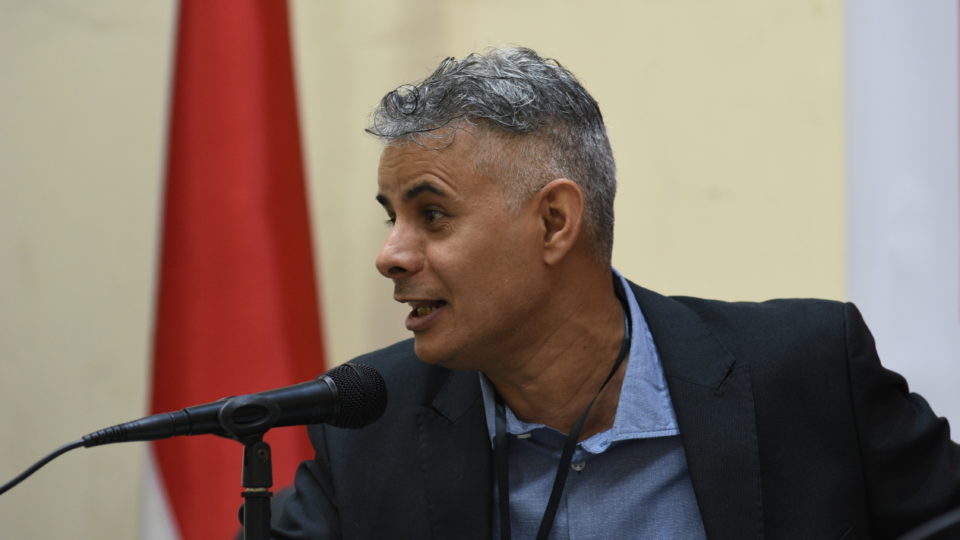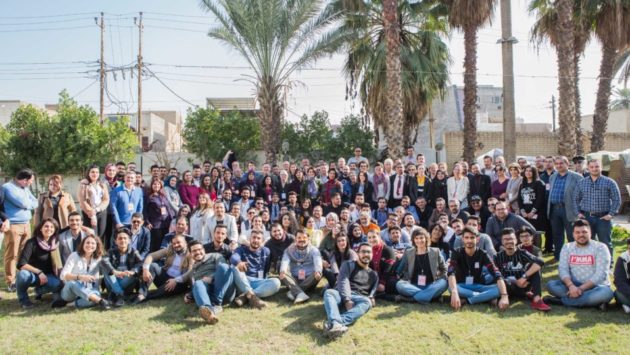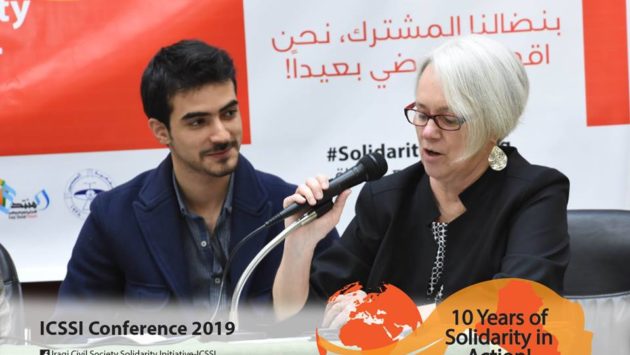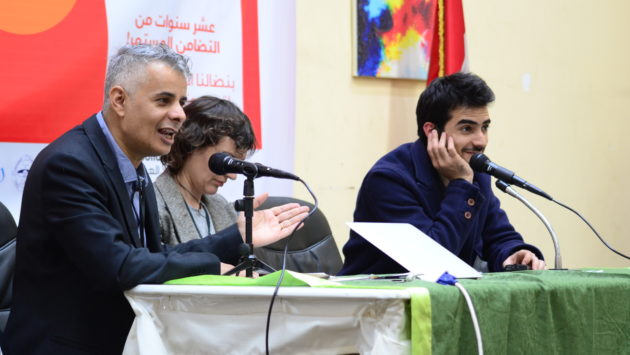Iraqi civil society in the last 10 years: Development, mobilization, and influence
Ismaeel Dawood
Iraqi Civil Society Solidarity Initiative Conference
Baghdad, 31 January 2019
Before I begin my presentation on the development of Iraqi civil society in the last ten years, I must say that it is not an easy task. I find it a bit of a trap, laid by my colleague and friend, Terry. She was the one who suggested that I address this topic.
First of all, I see a necessity to make some clarifications. We in this initiative, when we talk about civil society, we mean the broad expressions of civil action. This takes multiple forms: formal and informal organizations – and not only non-governmental organizations, but also teams of volunteers, unregistered gatherings, and forums.
Second, all I am providing here are observations as a follower of and participant in civil society. I am not necessarily covering the entire process over the last 10 years of this journey, and certainly not all of the successes or failures that accompanied them. These are what I think are the important steps that are necessary to mention, in accordance with my own perceptions and experiences.
Third, I will try to cover the internal side of the civil society, and not the external factors that surrounded the development of civil society, such as the security challenges and the falling oil prices.
The experience of freedom of assembly and the formation of civil society frameworks is new in Iraq and over the last ten years it went through important stages and transitions. The first stage was rapid proliferation and rapid deployment of civil society since 2003. It reached its peak in 2010, when the law of organizations right was legislated and with it, the right to assemble and form non-governmental organizations.
However, even with all the positive outlook and energy that this law produced, Compared to the purpose it was legislated for in the beginning. It only envisioned civil society as a single kind of entity, only one model and one framework. One template of a mass organization and one approach which is the representative democracy, hierarchical relations, members who create the public committee, and elections for the administrative committee and the chairman.
Thus, other frameworks, other models were left out – for example, the freedom of association, non-profit public institutions, elite centers, voluntary youth initiatives, and various campaigns. In addition, a large number of hierarchical organizations faced problems of continuous divisions because they couldn’t absorb differences. These organizations fell into the trap of competing among themselves in any and all capacities. Names of many organizations from that period reflected a passive impression on the mentality of citizens, they used to seek personal benefits, training workshops, five-star hotels, travel, which created an ugly impression of the civil society sector as a whole.
In turn; solidarity with Iraq also encountered serious problems, the most prominent of which was the difficulty for international solidary activists to obtain a visa to enter Iraq. This in turn contributed to a lack of sufficient awareness of the importance of international solidarity as a means to support civil society activities and the reconstruction of Iraq. The internationals who were in Iraq were confined to oil companies, big contractors, and other private sector companies, they were here for profit mostly – as well as the institutions linked to the agendas of the authorities in Iraq. The very few independent organizations were mostly concentrated in the Kurdistan region, which is why, for the past ten years, planning a conference in Baghdad has continuously faced problems with visa procedures, which continue to negatively affect today’s solidarity efforts with Iraqis and addressing Iraq’s challenges.
Since the start of Iraq’s protest movement, and especially since the “Days of Anger” in 2011, civil society gain a strong push, which resulted the appearing of mass campaigns wider than the small framework of organizations back then. for example, a campaign to prevent the salaries of the members of the parliament, other campaigns took on the defense of civil liberties, the appearance of different groups and teams organizing annual festivals, including the peace festival and the Iraqi Social Forum in 2013. The distinguish thing about those campaigns and festivals is the huge involvement of youth and especially young women. there were also campaigns that worked on urgent and important issues that have been neglected for years, such as the “Save the Tigris River” campaign, the campaign to pass a new labor law that ensures freedom of association and formation of unions, initiatives to promote sport against violence, such as annual peace marathons and other events.
These different models of working together were different than the previous ones and more effective. It came out with a promising model. There was a renewed desire among young people to engage in these new frameworks because they believed in the possibility of another Iraq.
But that optimism faded rapidly with the collapse of the Iraqi army and the occupation of many cities by Daesh. The entire Iraqi civil society was damaged. Millions were displaced and became refugees from their communities and homes. Out of this widespread darkness, good civil society models were implemented. But unfortunately, they did not receive enough attention and development. For example, Families opening their doors to refugees, cities accommodated huge numbers of new people, providing them with housing and food, popular re-life campaigns on the field and on social media. Some Organizations regained their strength and have emerged to carry out relief work both with in and outside the IDP and refugee camps and communities.
Thus, the bright light of a different future emerged. with the war escalating against Daesh and with the mobilization of Iraqis to stand along with the army in the in this war, the state of solidarity and coexistence expanded in its internal dimension, the groups of young people and girls returned to the front and went to relief and civil work. International solidarity with Iraq has also recovered in many ways.
With the return of the protest movement to the front in 2015 and 2016, the civil work space has increased dramatically and met important mass currents, and there has been unprecedented experience in organizing protests and mass movements. This has achieved a great impact at the highest level, perhaps not at the level of ambition, but it is an important change that we must be aware of, like the redrawing of the political map, a change in the management and handling of water issues, the legislation of the Labor Law, large attention to the environment and sport, the participation of women in general activities, open the door of dialogues with others, and preventing violent extremism and others.
The wave of work and self-regulation, in protest and campaigning, moved to the newly liberated cities, with the desire of societies there to rebuild and wipe out the dust of war. it re-spread again in southern Iraq and in the province of Kurdistan, setting the floor for a new stage. , Which has contributed the return of social ties and joint activities between the cities of the South, West, Central, and the cities of the KRG again.
I would like conclude with the following:
First: The transformation of frameworks from the form of mass organization into a model of campaigns, teams, groups, and new trade union organizations, which is a sign of maturity and re-birth of Iraqi civil society;
Second: The protest movement has helped in improving and benefited from open civic models and frameworks, the experiences of festivals, campaigns and forums, and the adoption of self-regulation for such activities has increased the abilities of young people,
Third: specializing in thematic issues, paths, and transforming the framework of civil administration to participative democracy and collective decision, with a new administration worthy of attention and care, and may constitute an Iraqi precedent in the Middle East and the Levant.
Fourth : The last years have opened the door to work on topics that were neglected for a long time, despite being critical, such as water and the environment, sports and the arts as a means to involve young people, cultural heritage, and others
Fifth: Creating solidarity according to the position has helped in growing long-term solidarity close ties and can be expanded significantly
– Adopting the concept of responsible action, resource sharing, and fundraising, against the model of waste and extravagance that prevailed, gave a strong impetus to civil society to correct people’s minds about its experience and the importance of its role.
– Reviewing is important and there is a need to carry out periodic reviews, criticizing ourselves in the first place is the right way to develop a successful civil society experience.




